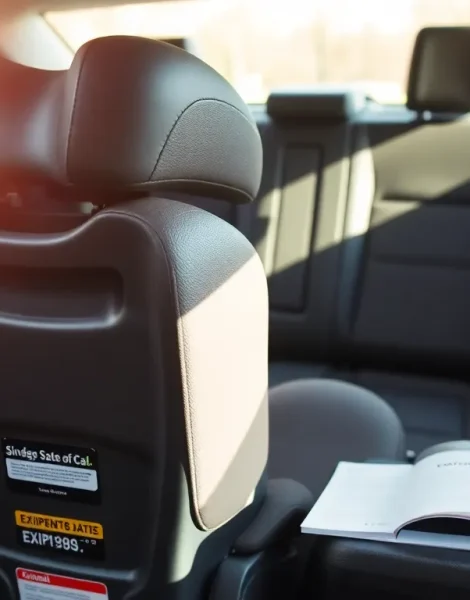Ever buckle up your little one and wonder if the car seat has seen better days? You’re definitely not alone. Finding the expiration date on a car seat can feel like searching for a needle in a haystack, but fret not. This guide isn’t just a humdrum list of tips: it’s your trusty roadmap through the twists and turns of car seat safety. Let’s immerse and uncover the mystery of that expiration date lurking in your car seat.
Table of Contents
ToggleUnderstanding Car Seat Expiration

Car seats aren’t just fancy chairs for the backseat: they’re crucial for keeping children safe during rides. But, just like milk, car seats come with a shelf life. Understanding why car seats expire is key to ensuring safety for your child. The life of a car seat generally spans about six to ten years, depending on the manufacturer and model.
Wear and tear from daily use, temperature fluctuations, and evolving safety standards can all render a car seat unsafe over time. Hence, it’s essential to know when your seat is due for retirement to keep your little traveler safe.
Why Car Seats Expire
So, why do car seats have expiration dates anyway? It’s not just a cunning marketing ploy. Various factors contribute to the expiration. First off, the materials used in car seats can degrade over time. Plastics can become brittle, upholstery can stain and wear out, and even the foam can break down, all leading to compromised safety.
Also, the automotive safety world is ever-evolving. Manufacturers continually improve safety standards based on new research. What was once deemed safe might not be up to snuff today. Expired seats may lack critical safety features adopted in newer models. Hence, using a dated car seat could leave your child vulnerable if an accident.
Locating the Expiration Date
Finding the expiration date on your car seat isn’t as challenging as it might seem. It usually involves checking a few common spots on the seat itself.
Common Locations for Expiration Labels
Check the bottom or back of the seat first. Most manufacturers place labels in these areas, but sometimes, they can be found along the side or underneath the fabric cover. Don’t forget to remove any fabric covers, sometimes, labels are hiding there.
If you still can’t spot the label, consult your user manual, which often contains this information as well.
Decoding the Expiration Format
Once you find the label, interpreting it can feel a bit like deciphering a secret code. Some manufacturers state the expiration date directly, while others might indicate a manufacturing date. In cases where only the manufacturing date is visible, remember the general rule: add six to ten years to that date to find out when your car seat expires.
What If There Is No Expiration Date?
Occasionally, a car seat may have no visible expiration date. This can happen with older models or seats that lack proper labeling. If faced with this dilemma, it’s best to proceed with caution. Consider the age of the car seat, if it’s older than six years, it’s wise to replace it. Also, inspect the condition of the seat. If you notice cracks, fraying, or any wear and tear, it’s probably time for an upgrade.
Manufacturer Guidelines and Resources
Consulting the manufacturer’s guidelines is a reliable way to get precise information about the expiration of your car seat. Most manufacturers provide detailed documentation about lifespan and replacement policies. Websites often host resources for checking car seat details, including how to safely recycle old seats. Don’t hesitate to reach out directly to customer service for clarification if needed. They can help answer specific questions and provide peace of mind.
Replacing an Expired Car Seat
If you discover that your car seat has expired, don’t panic. Replacing it is straightforward. Head to a local store or check online for safer, updated models. Nowadays, car seats come with numerous features focused on safety, comfort, and ease of use. Compare options and read user reviews to find one that fits your needs best. But be cautious: do not buy a used car seat without knowing its history, as it may come with unknown risks.









